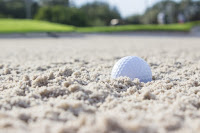Golf
So…we see golfers on the tele, they show great composure, confidence and play some of the best golf courses in the world. How do they get on/in the box? Todays blog entry identifies the path/route to becoming a professional golfer.
How do you become a pro golfer?
Firstly the younger you start the better the chance of success.
Starting young should give you more practice time/hours on the range. However there are various conflicting 'schools of thought'. Some argue it boils down to just a 'hard work ethic/sacrifice' and/or 'natural talent'. However there is some good news if you are in your late twenties or thirties. According to PGA website :
'Golfers sometimes don't make the grade until as late as their mid-30s. If it's your dream - don't give up.'
(Source: http://www.pga.info/AboutThePGAPro/33811381.htm)
How do you make the dinero?
The majority of golfers put bread on the table through coaching and affiliation with various golf clubs. Tournament golfers on the other hand are an elite few, the majority of the profession do not feature on tour. Part-taking in competitions on Tour can be expensive. If you
leave your job as an accountant and become a professional golfer, the bank manager is likely to 'gulp' and remind you of your mortgage repayment(s). You have to pay entry fees, hire a caddy, pay for a top coach, travel+accommodation expenses. Unless you make the second cut it will be an expensive folly. However if you are fortunate to 'bolt on' endorsements, the financial burden can be eased.
How do you make it as a PGA Pro.
According to the www.pga.info website, the PGA organises in excess of 900 tournaments a year with prize money amounting to 3.5million plus. Becoming a PGA Pro equips you with a broad understanding of not only playing golf but but understanding the role of golf club management.
The PGA states you can become a PGA Professional golfer via two ways:
1) Register as an assistant at an affiliated PGA golf facility, there trainees undertake a three year Foundation Degree in professional Golf Studies-accredited by the University of Birmingham (source: www.pga.info)
2) To undertake a three year BA Hons Degree in Applied Golf Management Studies at the university of Birmingham.
How to make it as a Tour Pro on the box...
Many folk become a PGA Pro initially, it acts as a safety net and gives the golfer something to fall back on.
However to play in front of the crowds and have the chance of winning great sums of dinero, the European Tour is the scheme to get into.
My understanding is that there are 135 score cards available, amateurs have to compete at the tour School at San Roque for around 35 score cards (ibid). Another tour which is seen to be a 'feeder' to the European Tour is the 'Challenge Tour'. An interesting article on the 'European Tour' website summarises the difference:
“I think the main difference between The European Tour and the Challenge Tour is the golf courses. The courses on the Challenge Tour don’t seem to be as difficult as those on the main Tour, but the guys on the Challenge Tour go low every week. You have to make a lot of birdies to have a chance to win there.”
(Source:http://www.europeantour.co.uk/default.sps?pageid=127&pagegid=%7BAEFB93B0-EFF5-4C05-AB0F-FD08D947D944%7D&eventid=2006754&infosid=3&pageno=1&reportid=53632)
Other notable Tours include:
PGA America (not confirmed)
LPGA Tour (1950)
European Tour (1972)
Japan Golf Tour (1973)
Asian Tour (1995)
Challenge Tour (1986)
European seniors Tour (1992).
Overall
In a nutshell, you have to be good, whether it is down to sheer talent, a hard work ethic or both, it is tough and competitive. You will have to compete for given playing cards, and to do so you should be a scratch to four handicap. Captain Golf can conclude that it is possible to make a living from golf, but difficult. So get down to the driving range....
Next Golfing Blog
-The next Captain Golf blog entry will look at wacky places to play golf.
-Lastly,good news, the rib is on the mend, roughly two more weeks until Captain Golf returns to the range....
You can contact www.captaingolf.blogspot.com via cgcaptaingolf@gmail.com
If you have enjoyed the above, help spread the word and forward the link to a couple of folk...



